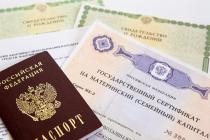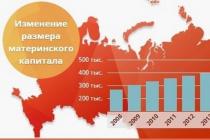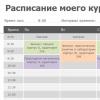In addition to the federal maternity capital, which is issued only once for the birth of a second or subsequent child, local maternity capital is issued in the regions. Each constituent entity of Russia has its own programs to support large families. In some places, regional capital is issued in cash, and it can be used for any needs; in others, its use is regulated.
In a number of regions, additional certificates are not issued at all, but the management of the subjects compensates, for example, by allocating land for the construction of a private house or helping to pay off the mortgage taken out.
Main Differences
Each region has its own programs. But they have common features:
- Regional maternity capital is issued, as a rule, for the birth of a third or subsequent child. However, in some regions, for example, in the Republic of Tyva, it is issued only for the birth of the fifth and subsequent ones, but the size of the subsidy is impressive. In some areas of the country, separate payments are provided for the birth of twins.
- The amount of local family capital is usually lower than the equivalent federal subsidy. Its size usually fluctuates around 100 thousand rubles.
- Federal capital is issued once, but regional capital can be issued for each child born, if provided for by the program.
- The expenditure of all-Russian family capital is strictly regulated. For example, you can’t spend it on a car anymore. In some regions, for example, the Kaliningrad region, the scope of application of regional capital is expanded, but also regulated. The basic principle is that money should be spent in the interests of all family members. And in other regions, for example, in Tver, the amount is simply given to the family in cash, and they are free to use it at their own discretion.
- Availability of an alternative. Some regions offer other forms of incentives for large families instead of money. In Bashkortostan, for example, land is allocated for construction; in Kamchatka, regional authorities “close” the mortgage if the family has a third child and at least 10% of the loan cost has been paid and there are no arrears or debts.
- Expiration date. A moratorium has been established on the expenditure of all-Russian capital for 3 years. As a rule, there are no such restrictions on the use of local subsidies.
- Additional requirements. If federal maternity capital is issued to each family that has a second child during the program period, then local maternity capital can only be given if certain requirements are met. For example, a family must be recognized as low-income.
Programs may vary not only depending on the region, but also depending on the locality: there may be other requirements, a different amount, and so on. Therefore, it is best to contact your local administration for clarification on this issue.
 If the federal one is registered with the Pension Fund of Russia, then to register the regional one you will need to contact the department of social support of the population (it is often called simply “social security”).
If the federal one is registered with the Pension Fund of Russia, then to register the regional one you will need to contact the department of social support of the population (it is often called simply “social security”).
The set of documents will be different in each case, so it is better to consult a specialist about the composition of the package. However, you will definitely need:
- Applicant's passport.
- Documents on the birth or adoption of children.
- Certificate of marriage or divorce.
- Certificate of family composition.
You may also need:
- Documents confirming the status of a low-income family.
- Mortgage agreement with the bank.
- Certificate of income from your place of work or account statement.
- Information about property and so on.
After filling out the application and submitting all documents, you will need to wait for approval.
The waiting period depends on the established regulations, but usually no more than 30 days.
Afterwards, you can receive a certificate or funds, receive instructions on how to spend them and provide reporting on the funds spent to the social security department.
At the end of 2006, on the initiative of the President of Russia, a federal law was adopted aimed at increasing the birth rate in our country and providing state support to families with children. (Federal Law No. 256 of December 29, 2006 “On additional measures of state support for families with children”). Five years later, in 2011, at the proposal of the Head of State, along with the Federal Maternity Capital program, local programs aimed at helping large families began to operate in almost all regions.
Currently, families with children are provided with bilateral support - subsidies from the Federal Center and from local constituent entities of the Russian Federation (regions, territories, regions). The purpose of subsidies is the same, but the conditions for receiving and using them are somewhat different.
So, as of today, throughout our country, every family in which a baby was born is allowed to resort to financial support:
- State level - federal maternity capital. It was formed at the federal level, its size is fixed and approved by the government;
- Regional scale - maternal regional capital. The subsidy is established by local governments.
The most important difference between these programs is the source of subsidies. “Generally accepted” family subsidies are funds received from the federal budget. The volume of federal maternity capital is 453,026 rubles for each family. The amount of regional subsidies varies from 25,000 rubles to 450,000 rubles.
Regional payments to families with children are made from funds of the region, region or city, which are at the disposal of local authorities
What is regional maternity capital
An additional measure to increase and maintain the material well-being of large families is an ever-expanding regional program, which is more targeted.
Maternity capital at the regional level is approved by local governments. The amount of regional maternity capital is established in accordance with the capabilities of regional budgets and is determined directly locally and largely depends on the economic and social level of development of the region.
Regional authorities also determine the conditions for the provision and intended use of maternity capital. In general, the requirements for receiving and directions for using subsidies in different regions are identical, but there are also some differences, often very significant.
Regional maternity capital in 2017: changes and latest news
The “Maternity Capital” social program of state assistance, which is receiving increased interest in our country, will continue at least until 2020. The project is not planned to undergo any sensitive changes, and its further existence will fully depend on the economic situation in our country. Numerous rumors and various kinds of speculation about the closure of this program have no basis. It is assumed that maternity capital may be replaced by other measures that stimulate fertility.
Regional maternal family capital in the amount of 100 thousand rubles
Regional MK on average across the country is 100.0 thousand rubles (Rostov-on-Don, Kirov region and others). For example, in the Republic of Khakassia, the amount of the subsidy depends on the size of the family’s locality and ranges from 100.0 to 200.0 rubles. But in any case, capital is received in non-cash form and only in accordance with concluded agreements between the certificate holder and another person.
Local legislative authorities allow the use of maternity capital in parts and for various needs of large families.
The size of regional maternity capital in 2017
The value of the regional MK in 2017 practically did not change and depends on the economic state of the region. Parents with many children can check its size at the social assistance and protection authorities at their place of residence.
According to statistical data for various regions of the country, the value of this subsidy is:
- 50,000 rubles – Adygea, Kalmykia, Altai Territory, North Ossetia, Mari El Republic and others;
- 100,000 rubles – Kirov, Ulyanovsk, Voronezh, Sverdlovsk regions and many others;
- more than 100.0 thousand rubles – Sakhalin, Magadan, Kaliningrad region, etc.
You can receive maternity capital only once and it is not subject to tax.
What can maternal regional capital be spent on?
Regional authorities, in accordance with local laws and regulations, have expanded the range of use of regional MK in comparison with the federal program of financial assistance to families with children.
Having summarized the target orientation of regional subsidies in various regions, we can name the permitted areas for the use of regional financial capital by parents:
- Necessary and significant for family members - purchasing a wheelchair, household appliances, etc.;
- Improving the quality of housing - buying an apartment, a larger home;
- Repair and reconstruction work of existing living space;
- Sanatorium-resort and health improvement in healthcare institutions, regardless of the form of ownership;
- Payment for education, for visiting kindergartens and other development and training organizations;
- Acquiring a plot of land to build a house outside the city;
- Purchasing a car;
- Development of individual subsidiary farming;
- Permitted at the request of guardians/parents.
Yes, it's possible. Decree of the Government of the Russian Federation No. 926 of December 24, 2007 does not establish any prohibitions on the choice of form of education.
When can you use regional maternity capital?
Most regional subsidy programs for the use of maternity capital allow the use of funds when a child turns three years old. But in some areas, large families are given the right to allocate targeted money for family needs even before this period. For clarification on this matter, you can contact the MFC at your place of residence.
Who is entitled to regional maternity capital?
In 2017, approximately seventy regional programs operate throughout Russia. According to these projects, the following can count on receiving gubernatorial one-time benefits:
- all families whose baby (third and subsequent) was born no earlier than January 1, 2011;
- mothers who adopted/gave birth to a third/next (sometimes 2nd) child within the time limits established by local laws;
- fathers who have the status of sole adoptive parent/guardian or parent of children.
According to regional legislation, you can issue a certificate at any time convenient for the parents after the birth of the baby, but it is advisable not to postpone this important event for long. As a rule, regional authorities are sympathetic to this issue and allow the certificate to be issued by a trusted person, and not by the parent.
Certificate for regional maternal family capital
To take advantage of the regional subsidy, large families must initially obtain the appropriate certificate. Parents and guardians, as a rule, have enough time to complete it (three years), so immediately after the birth or adoption of a child there is no need to immediately engage in this procedure. In addition, an authorized person acting under a notarized power of attorney from a low-income family can prepare and submit the required package of documents to the social protection authorities.
Documents for obtaining regional maternity capital
Most families, after the birth of their second child, were collecting documents to obtain the Federal MK. The list of document packages for regional financial support is almost the same:
- civil passport of the interested person;
- certificates (of birth or adoption) of absolutely all children in the family;
- pension insurance certificate.
The list of required documents is accompanied by an application of the established form with reliable, complete information regarding the composition of the family, place of registration and registration, and the civil status of the applicant. The application is signed by the subject in whose name the certificate will be issued. Copies of documents may be provided. Residents living in remote locations may provide documentation by mail.
Law on regional maternity capital
Regional legislation relating to payments to regional MK varies greatly in different constituent entities of the Russian Federation. This mainly affects the terms of payment and the amount of benefits received. But all regional laws and acts contain the following fundamental sections:
- What does the regulatory document regulate?
- Basic concepts used by law
- Competence of local authorities
- Who can receive MK
- Targeted use of maternal capital and reporting
- Amount, terms and conditions for receiving subsidies
- Effective dates of the law.
For example, in the Saratov region there are 212 laws on regional maternity capital, in the Sverdlovsk region - 86 laws on regional maternity capital, in the Rostov region - law No. 727-zs of November 18, 2011 “On regional maternity capital”.
Is it possible to use regional maternity capital for up to 3 years?
Regional authorities allow you to use regional family capital until the child reaches the age of three. Paying off a mortgage loan, purchasing the necessary housing - areas for early use of microfinance.
Legally cashing out maternity capital does not mean getting cash “in your hands” as ordinary people think. Cashing out maternity capital - this means transferring funds by non-cash method to the current account of organizations according to the intended use through the banking system.
Where to get it
Various organizations are involved in the registration and issuance of regional subsidies to MK in different regions of Russia. Among others, we can highlight:
- social protection authorities at the place of residence (Rostov-on-Don, Sakhalin, Mari El Republic, Altai Territory and other cities);
- Ministry of Health and Social Development and its territorial bodies (Kalmykia);
- Ministry of Education of the region (Republic of Tatarstan);
- Pension fund at the place of registration/residence (Udmurtia, Kirov region, Adygea).
The recipient of the MC or a person with a power of attorney must write a statement in the established form and submit it to the relevant authorities for consideration. One month is allotted to make a decision on issuing a certificate, after which the applicant is informed within five days of the accepted conclusion. You can receive the document in person or by mail.
Is it possible to spend regional maternity capital on buying a car?
It is permissible to purchase a vehicle using regional capital. But only a few regions of our country provided such an opportunity to families with children - Novosibirsk, Lipetsk, Oryol, Kaliningrad, Ulyanovsk regions, Kamchatka. A total of no more than fifteen areas.
Each subject of the Russian Federation independently determines the conditions for purchasing a family car using regional subsidies of maternity capital:
- a family in which the third (and/or next child) was born after January 1, 2011 has the right to acquire a domestically assembled car;
- the total family income should not be more than 3-3.5 times the regional subsistence minimum;
- You can become a car owner after your baby reaches the age of 6 – 12 months;
- one of the parents must have continuously resided in the region for at least three years;
- mandatory registration of a vehicle in the name of the mother.
And this is not a complete list of requirements established by regional authorities for the purchase of a car by large families.
To spend regional maternity capital on purchasing a car, the applicant must provide certain documentation to the social security authorities:
- Identification document – passport.
- Certificate.
- Application for its expenditure.
- Agreement for the purchase of a motor vehicle.
- PTS issued to the acquirer.
- Bank agreement for car loans.
- A certificate from a credit institution with details for transferring funds.
The application is reviewed within 2-3 weeks.
This program, an exchange of regional capital subsidies for the purchase of a car, has been developed and implemented in a few specific regions of the country. You should know that funds allocated from the federal budget for maternity capital cannot be spent on buying a car.
From what year is it issued?
In 2011, the President of our country Dmitry Anatolyevich Medvedev initiated regional and regional programs that provide significant financial support to young large families. The projects were supposed to work in parallel with the state maternity capital program, but the funds were to be allocated from local budgets and provided in a more targeted manner. The initiative of the country's leader was taken up by local legislators and maternity capital projects of regional, republican, and regional significance began to be developed everywhere, relying on the existing financial capabilities of the region and its historical individuality.
The Regional Maternity Capital program started at the end of 2011. Only families with 3 or more children (in some regions with two children) can receive a regional certificate. The subsidy is one-time in nature.
Payment for kindergarten
One of the target areas for using the governor's MK is payment for kindergarten services (private, departmental, public). The main and only requirement in this case is that the kindergarten must be located in the region and have a license to carry out this type of activity.
To pay for the services of children's educational institutions, it is necessary to obtain permission from the Pension Fund of Russia by providing a previously concluded agreement with the preschool educational institution. After approval from the Pension Fund, funds are transferred non-cash to the kindergarten's bank account.
In the regions, territories, regions of our country, both for one and several children at once.
Maternal regional capital for the 3rd child
Regional programs to support large families involve payments of maternity capital for the third child, subject to certain conditions. These basic requirements include:
- permanent residence of one of the parents in the region for a certain period of time (from one year);
- presence of Russian citizenship among parents and children;
- the birth/adoption of a child should not be earlier than 01/01/2012;
The amount of maternity capital varies depending on the region of residence of the family and ranges from 50,000 rubles to 430,000 rubles. Moreover, MK is subject to indexation in accordance with inflation.
When is it paid?
Regional maternity capital is paid, like the federal MK, within a certain time frame - when the child reaches 3 years of age. But there are certain conditions when its use is possible even earlier than the time established by law. This is the need to pay off an existing mortgage loan and purchase a home.
Payments of subsidies to young families from the federal and regional budgets are a manifestation of genuine concern for the growing generation. Such attention and guardianship from the state allows parents to create friendly, large families and not stop at two or three children, and also provides an opportunity for a large family to grow stronger during its formation period.
2019-04-23
RedRocketMedia
Bryansk, Ulyanova street, building 4, office 414
Maternity capital in Moscow
13.07.2018
To increase the birth rate and improve the demographic situation in the country, since 2007, a federal maternity (family) capital program. The success of the federal program has inspired the authorities of many regions of the Russian Federation to develop similar programs at the local level. However, Moscow is one of the few regions of the country where such a proposal was not supported - unlike its neighbor, in the capital not provided, and its residents can only obtain a certificate for for the second child(or for the third and subsequent ones, if mat capital has not yet been issued to the family for previous children).
At the same time, Muscovites can apply for many other social payments and benefits provided for by the regional legislation of Moscow - both one-time and monthly. These numerous payments, in fact, replace regional maternity capital for Muscovites, since their amount often significantly exceeds the size of regional certificates in other regions of the country. At the same time, you can receive funds already after the birth of the first baby in the family and use them for any need at your own discretion.
Demographic situation in the region
Moscow is the most populated city not only in Russia, but also in Europe. According to official data from Rosstat, as of January 1, 2017, the population of Moscow is 12 million 381 thousand people. And this figure is growing from year to year. Also growing in the region birth rate. In 2016, over the past 17 years, it reached its peak - 145.3 thousand children(or 11.7 people / 1000 inhabitants).
The birth rate in the capital has always been high. At the same time, most of her families still stop at one child. Thus, the introduction of the maternity capital program did not greatly affect this indicator.
Despite the increase in the birth rate, mortality in Moscow is still high, and therefore there has been a natural decline for many years. Its sharp decline was observed in 2011, and since then this figure has not changed significantly (in 2016 this figure was 123.8 thousand people, or 9.9 people. / 100). Therefore, over the past six years, the capital has seen natural population growth (birth rates exceed deaths).
Implementation of the federal maternity capital program
- - that's what they ordered 64 thousand residents of the capital;
- payment for preschool, secondary school or higher education - 36.3 thousand Moscow families;
- mothers - even in huge Moscow, in 10 years it was accepted only 384 applications;
- payment for goods and services directed - for this new direction, opened in 2016, an application was accepted from only 5 families.
Also, in 2016, Moscow residents actively used the opportunity to receive lump sum payment from maternity capital funds in the amount of 25 thousand rubles.
Regional maternity capital in Moscow
After the introduction of the federal maternity capital program and its successful operation, in order to improve demographic indicators in the regions, authorities at the local level in many constituent entities of the Russian Federation decided to introduce similar material support for families with children -. However, the Moscow Government did not support this initiative. Currently There is no regional maternity capital program in the capital.
It is noteworthy that it is envisaged at the regional level, but its registration was suspended in 2017.
It is worth noting that despite the fact that Muscovites cannot participate in the regional maternity capital program, the capital authorities have provided other material support for families with children - all kinds of payments and benefits. Moreover, the amount of this support is comparable to local maternal capital in other regions.
Residents of Moscow can apply for a one-time city payment, large “Luzhkov” payments at the birth of a child in young families (paid in an increased amount for the second, third and subsequent children), as well as assistance to low-income families, benefits for single mothers, etc. In addition, certain categories of Muscovites can count on financial assistance due to rising costs of living and food.
Direction of funds (part of funds) of maternity capital to pay the price of the agreement for participation in shared construction
6. Agreement on participation in shared construction, which has passed state registration in the prescribed manner.
7. A document containing information about the amount paid in payment of the price of the agreement for participation in shared construction and the remaining unpaid amount under the agreement, indicating the details of the organization for the transfer of funds.
8. A notarized written obligation of the person (persons) who is a party to the agreement for participation in shared construction, within 6 months after signing the transfer deed or other document on the transfer of the shared construction object to the participant in shared construction, to register the residential premises built using funds (part of the funds) maternity capital, into the common property of the applicant, his spouse, children (including the first, second and subsequent children) with the size of shares determined by agreement.
Directing funds (part of the funds) of maternity capital to compensate for costs incurred for the construction of an individual housing construction project, the ownership of which arose no earlier than 01/01/2011, or for the reconstruction of an individual housing construction project carried out after 01/01/2011
4. Passport or other main identification document of the spouse - if the party to the transaction or obligations for the acquisition (construction) of residential premises is the spouse, or the construction or reconstruction of an individual housing construction project is (was) carried out by the spouse.
6. A document confirming the ownership right of the applicant or his spouse to the land plot on which the construction of an individual housing construction project is taking place, or the right of permanent (indefinite) use of such a land plot, or the right of lifelong inheritable possession of such a land plot, or the right to lease such a land plot , or the right to free, temporary use of a land plot that is intended for housing construction and on which the construction of an individual housing construction project is being carried out.
7. Construction permit issued to the applicant or his spouse.
8. Certificate of state registration of ownership of an individual housing construction project that arose no earlier than 01/01/2011, or a copy of the certificate of state registration of ownership of an individual housing construction project reconstructed after 01/01/2011, regardless of the date of origin of ownership of the individual housing construction project , undergoing reconstruction.
9. A notarized written obligation of the person (persons) in whose ownership the individual housing construction object is located, to register the specified object as the common property of the applicant, his spouse, children (including the first, second and subsequent ones) with the determination of the size of shares by agreement within 6 months after the territorial structural unit transfers funds (part of the funds) of maternity capital - if the individual housing construction project is not registered as the common property of the applicant, his spouse, children (including the first, second and subsequent children).
10. The applicant's current account.
Directing funds (part of the funds) of maternity capital to repay the principal debt and pay interest on a credit (loan), including a mortgage, for the purchase or construction of housing, or on a credit (loan), including a mortgage, to repay a previously granted credit (loan) ) for the purchase or construction of housing (with the exception of fines, commissions, penalties for late fulfillment of obligations under the specified credit (loan)
1. Certificate for regional maternal (family) capital.
2. Passport or other main document identifying the applicant in accordance with the legislation of the Russian Federation.
3. Marriage certificate of the applicant - if a party to the transaction or obligations for the acquisition or construction of housing is the applicant’s spouse (hereinafter referred to as the spouse) or if the construction or reconstruction of an individual housing construction project is carried out by the spouse .
4. Passport or other main identification document of the spouse - if the party to the transaction or obligations for the acquisition (construction) of residential premises is the spouse, or the construction or reconstruction of an individual housing construction project is (was) carried out by the spouse.
5. Birth certificates of all children (and child’s passport, for children over 14 years old) .
6. Credit agreement (loan agreement). When funds (part of the funds) of maternity capital are used to repay the principal debt and pay interest on a loan (loan), including a mortgage, to repay a previously granted loan (loan) for the purchase or construction of housing, an additional copy of the previously concluded loan agreement (loan agreement) is provided ) for the purchase or construction of housing;
7. Certificate from the creditor (lender) about the amount of the balance of the principal debt and the balance of the debt to pay interest for using the credit (loan). If the right (claim) belonging to the creditor on the basis of an obligation is transferred by him to another person (assignment of the right of claim, transfer of rights to a mortgage) in the procedure for transferring rights under loan agreements secured by a mortgage, establishedArticles 47 And 49 Federal Law "On Mortgage (Pledge of Real Estate)", or transferred to another person on the basis of the law, the certificate indicates information about the name and location of the creditor to whom the rights under the credit agreement (loan agreement) belong to the date of the certificate. If a certificate is submitted on behalf of the creditor by a third party acting on the basis of a power of attorney, a copy of the creditor's power of attorney is provided to the third party.
8. A mortgage agreement that has passed state registration in the prescribed manner, if the credit agreement (loan agreement) provides for its conclusion;
9. Certificate of state registration of ownership of the residential premises of the applicant and (or) his spouse, acquired or built using credit (borrowed) funds - in the case of the acquisition of residential premises, as well as in the case of commissioning of a residential construction project;
10. An agreement on participation in shared construction that has passed state registration in the prescribed manner, or a copy of the permit for the construction of an individual residential building, if the housing construction project has not been put into operation;
11. An extract from the register of members of the cooperative, confirming membership in the cooperative of the applicant or spouse (a document confirming the submission by a citizen of an application for admission to membership in a housing savings cooperative, or a decision on admission to membership in a housing, housing-construction cooperative), if the loan (loan ) presented for payment of the entrance fee and (or) share contribution to the cooperative .
12. If the residential premises are not registered as the common property of the applicant, his spouse, children (including the first, second, third child and subsequent children) and other family members living together with them or state registration of ownership of the residential premises has not been carried out - a notarized written obligation of the person (persons) in whose ownership the residential premises are registered, acquired using funds (part of the funds) of maternity capital, or who is a party to the transaction or obligations for the acquisition or construction of residential premises, to register the specified residential premises as the common property of the applicant, his spouse, children (including the first, second, third child and subsequent children) with the determination of the size of shares by agreement within 6 months:
after the removal of the encumbrance from the residential premises - in the case of the acquisition or construction of residential premises using a mortgage loan (loan);
after the commissioning of a housing construction project (in the absence of encumbrances) - in the case of individual housing construction or participation in shared construction;
after the applicant or his spouse makes the last payment, completing the payment of the share contribution in full - in the case of participation in a cooperative;
after the territorial structural unit transfers funds from regional maternal (family) capital (in the absence of an encumbrance and when a housing construction project is put into operation) - in other cases .
Directing funds (part of funds) of maternity capital to pay for purchased residential premises
1. Certificate for regional maternity (family) capital .
2. Passport or other main document identifying the applicant in accordance with the legislation of the Russian Federation.
3. Marriage certificate of the applicant - if a party to the transaction or obligations for the acquisition or construction of housing is the applicant’s spouse (hereinafter referred to as the spouse) or if the construction or reconstruction of an individual housing construction project is carried out by the spouse .
4. Passport or other main identification document of the spouse - if the party to the transaction or obligations for the acquisition (construction) of residential premises is the spouse, or the construction or reconstruction of an individual housing construction project is (was) carried out by the spouse.
5. Birth certificates of all children (and the child’s passport, for children over 14 years old).
6. Agreement for the purchase and sale of residential premises that have passed state registration in the prescribed manner;
7. Certificate(s) of state registration of ownership of the residential premises of the applicant and (or) his spouse purchasing residential premises using funds (part of the funds) of maternity capital (except for the case of concluding a purchase and sale agreement for residential premises with installment payment) ;
8. A certificate from the person carrying out the alienation of residential premises under an agreement for the purchase and sale of residential premises with installment payment, concluded with the applicant or with the applicant’s spouse, on the amount of the remaining unpaid amount under the agreement - if the acquisition of residential premises is carried out under a contract for the sale and purchase of residential premises with installment payment.
9. A notarized written obligation of the person (persons) who is the buyer under the contract for the sale and purchase of residential premises to register the residential premises as the common property of the applicant, his spouse, children (including the first, second and subsequent children) with the determination of the size of shares according to the agreement within 6 months after the territorial structural unit transfers funds to the person alienating the residential premises, and in the case of acquiring residential premises under an agreement for the purchase and sale of residential premises with installment payment - within 6 months after making the last payment completing payment of the cost of the residential premises in full size, - if the residential premises are not registered as the common property of the applicant, his spouse, children (including the first, second and subsequent children) or state registration of ownership of the residential premises has not been carried out .
10. Seller's current account.
Disposal of funds (part of the funds) of maternity capital for the construction, reconstruction of an individual housing construction project without the involvement of a construction organization
1. Certificate for regional maternal (family) capital.
2. Passport or other main document identifying the applicant in accordance with the legislation of the Russian Federation .
3. Marriage certificate of the applicant - if a party to the transaction or obligations for the acquisition or construction of housing is the applicant’s spouse (hereinafter referred to as the spouse) or if the construction or reconstruction of an individual housing construction project is carried out by the spouse .
4. Passport or other main identification document of the spouse - if the party to the transaction or obligations for the acquisition (construction) of residential premises is the spouse, or the construction, reconstruction of an individual housing construction project is (was) carried out by the spouse .
5. Birth certificates of all children (and child’s passport, for children over 14 years old) .
6. A document confirming the ownership right of the applicant or his spouse to the land plot on which the construction of an individual housing construction project is taking place, or the right of permanent (indefinite) use of such a land plot, or the right of lifelong inheritable possession of such a land plot, or the right to lease such a land plot , or the right to free, temporary use of a land plot that is intended for housing construction and on which the construction of an individual housing construction project is being carried out;
7. Construction permit issued to the applicant or his spouse;
8. Certificate of state registration of the applicant’s or spouse’s ownership of an individual housing construction project - if funds (part of the funds) of maternity capital are allocated for its reconstruction;
9. A notarized written obligation of the person (persons) for whom the construction permit is issued, within 6 months after receiving the cadastral passport of the individual housing construction project, to register the residential premises, built (reconstructed) using funds (part of the funds) of maternity capital, into the general property of the applicant, his spouse, children (including first, second and subsequent children) with the size of shares determined by agreement
10. The applicant's current account.
Directing funds (part of the funds) of maternity capital to pay for the construction of an individual housing construction project, carried out with the involvement of a construction organization
1. Certificate for regional maternity (family) capital .
2. Passport or other main document identifying the applicant in accordance with the legislation of the Russian Federation .
3. Marriage certificate of the applicant - if a party to the transaction or obligations for the acquisition or construction of housing is the applicant’s spouse (hereinafter referred to as the spouse) or if the construction or reconstruction of an individual housing construction project is carried out by the spouse .
4. Passport or other main identification document of the spouse - if the party to the transaction or obligations for the acquisition (construction) of residential premises is the spouse, or the construction or reconstruction of an individual housing construction project is (was) carried out by the spouse.
5. Birth certificates of all children (and the child’s passport, for children over 14 years old).
6. Construction permit issued to the applicant or his spouse;
7. Construction contract;
8. A document confirming the ownership right of the applicant or his spouse to the land plot on which the construction of an individual housing construction project is taking place, or the right of permanent (indefinite) use of such a land plot, or the right of lifelong inheritable possession of such a land plot, or the right to lease such a land plot , or the right to free, temporary use of a land plot that is intended for housing construction and on which the construction of an individual housing construction project is being carried out;
9. A notarized written obligation of the person (persons) for whom the construction permit is issued, within 6 months after the commissioning of an individual housing construction project, to register the residential premises, built using funds (part of the funds) of maternity capital, as the common property of the applicant, his spouse, children (including the first, second and subsequent children) with the determination of the size of shares by agreement.
You can use a certificate for regional maternity capital only after the child for whom the certificate is issued reaches the age of 3 years
Until December 31, 2016, two separate maternity capital programs were in effect in the Moscow region: federal(relevant for the entire territory of the Russian Federation, extended until December 31, 2018, the payment amount is 453 thousand rubles) and regional(applies only to residents of the Moscow region, but not, and was valid for families who gave birth to or adopted a second or subsequent child in the period from 01/01/2011 to 12/31/2016).
The goal of both directions is to stimulate the birth rate in families and improve the standard of living of the least protected, from a social point of view, categories of the population of the Moscow region.
The two programs are similar in many ways: in the general terms of use of money, goals and grounds for registration, but they differ in amounts. Regional maternity capital, similar to the federal one, belongs to the whole family, and not just to the person who issued it. It can be used for the common good or for the education of any of the children.
Demographic situation in the region
Over the past ten years in the Moscow region:
- the birth rate is rising(from 9.0 to 12.6 births per 1000 population);
- mortality rate is decreasing(from 17.5 to 13.9 per 1000);
- observed natural decline(from 8.5 to 1.3 people per 1000), which tends to decline;
- general population is growing(from 6.63 million to 7.23 million people, not including the capital) due to an increase in the birth rate and life expectancy, as well as the migration influx of residents.
A gradual increase in the birth rate in the region has been observed since 2002; the best years were 2010-2012. After a slight decline in births between 2012-2013, the following dynamics have been observed since 2013: the birth rate and the number of certificates issued are increasing almost proportionally.
There has been a demographic increase in the region before the introduction of maternal capital. Therefore, it is unlikely to be correct to link fertility with the program. In the region, many families still give birth to one child at a time.
The birth rate among married citizens in the region depends in most cases on the level of income. However, to achieve the second goal - increasing the security of families with children- maternity capital is very useful. Especially in the current crisis.
Implementation of the federal maternity capital program
The state maternity capital program operates on the basis of Federal Law No. 256-FZ of December 29, 2006. Most certificate holders prefer to direct money to.
As of July-August 2015:
- 530 thousand families received from Moscow and the region;
- near 65 thousand recipients completely managed the money;
- 98 thousand families decided to use social benefits for, of which:
- 68.2 thousand invested in (26.9 billion rubles);
- 29.9 thousand allocated funds for housing without using a loan (10.6 billion rubles);
- 35.2 thousand applications submitted to invest money in (3.4 billion rubles);
- 387 applicants use funds (133.3 million rubles).
Who is entitled to regional maternity capital?
To qualify for social benefits, you must compliance with such conditions:
- birth (adoption) into a family second child between 01/01/2011 and 12/31/2016(or subsequent, if maternity capital was not paid for the second);
- registration of the person applying for payment on the territory of the Moscow Region (in this case, citizenship can be any);
- Russian citizenship of the born child.
Have the right to receive social benefits:
- woman who gave birth to (adopted) a child in the period 01/01/2011-31/12/2016;
- a man who acts as the sole adoptive parent of a second (subsequent) child;
- the father (adoptive parent) of the child, the mother is deceased, deprived of parental rights, declared incompetent or missing;
- children in equal shares if both their parents (adoptive parents) are dead, incapacitated, deprived of rights or disappeared.
Documents required for registration
To receive a certificate for regional maternity capital, submit to the social protection authority statement in the prescribed form. Attached to it copies or originals:
- passports and registration documents on the territory of the Moscow Region;
- birth certificates of all children (or court decisions on adoption);
- certificates of citizenship of the child, after whose birth the right to maternity capital arose;
- certificates of marriage/divorce or change of surname;
- documents indicating the death, deprivation of rights or incapacity of the child’s mother, if the documents are submitted by the father or adoptive parent.
You can apply for regional maternity capital at any time after the second (next) child appears in the family.
When contacting the social security authority in person or through an intermediary, you are provided with originals, and when sending documents - certified copies. If a representative applies, he must present his passport and power of attorney.
The procedure for disposing of regional maternity capital funds
Money can be used for one purpose, or it can be divided into several parts. To use the funds there are two directions, coinciding with the purposes of spending federal maternity capital:
- improvement of living conditions:
- purchase of living space;
- construction or reconstruction of housing on the territory of the Moscow Region (with or without the involvement of contractors);
- purchasing housing using credit funds (repayment of loan debt and interest);
- compensation for construction costs that the family incurred after the right to regional capital became available;
- payment of obligations arising before the birth of the second (third) child.
- education of any child in the family, native or adopted, if at the time of starting his studies he will not be more than 25 years old.
The purchased residential premises must be registered in common shared ownership between all family members.
The decision to approve or refuse the application is made by the social security authority within the deadline 15 days(on the issue of obtaining education) or 45 days(using money to improve living conditions). In the case of construction with one’s own hands, the amount is transferred to the certificate holder in two installments: after submitting the application and six months later.
Manage regional money. capital in the general case can only after the second child turns 3 years old.
Funds are transferred no later than 2 months later after making a positive decision. But if after the second child a third was born, and the application was submitted after this moment, disposition of funds will be delayed until the 3rd birthday of the third child. This point should be taken into account when applying for social benefits.
Documents required to manage funds under the certificate
Intended use funds involves submitting an application for disposal and a certificate, supported by relevant documents, to the social security authority. The latter differ depending on the situation:
- when buying a home:
- purchase and sale agreement with state registration;
- certificate of state registration of the ownership rights of family members to residential premises;
- seller's bank account details;
- when repaying a loan, including a mortgage:
- loan agreement with the bank;
- mortgage agreement with state registration;
- a certificate from the bank about the loan balance and interest;
- a notarized obligation to register the premises as common property after the final payment of the loan;
- during reconstruction or construction:
- contract agreement (if the work is performed by a third party);
- acts of completed work;
- a construction permit and a document on ownership of the site (if a new individual residential building is being built);
- obligation to register the house as common property after construction;
- receipts for the purchase of materials;
- details of the reconstruction or construction contractor, or his account number (if the work was carried out on his own after the right to maternal capital arose);
- when paying for an educational institution:
- a service agreement providing for the investment of funds from maternal capital;
- license for educational activities (for all organizations except kindergartens);
- certificate of state accreditation.
Conclusion
For residents of the Moscow region, regional maternity capital has its own characteristics and differs from programs. Social assistance due to the family after the birth of the second or the next child until December 31, 2016, can be enrolled in child care training or improvement of living conditions.
The regional cash benefit in 2016 was 100 thousand rubles, and the amount is 453 thousand rubles. The difference is that state maternity capital can be used up to the child’s 3rd birthday, while regional maternity capital can be used exclusively after. Considering real estate prices in the Moscow region, these amounts are not too large, but the number issued is growing from year to year. And the money is spent mainly on housing.














